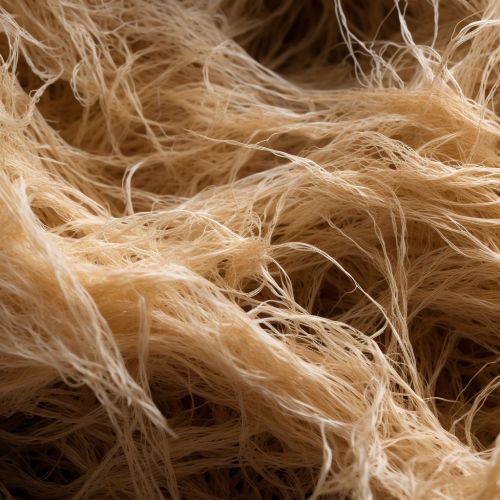Cellulose
Overview
Cellulose is an organic compound, a polysaccharide consisting of a linear chain of several hundred to many thousands of β(1→4) linked D-glucose units. It is the most abundant organic polymer on Earth. The cellulose content of cotton fiber is 90%, that of wood is 40–50%, and that of dried hemp is approximately 57%. Cellulose is mainly used to produce paperboard and paper. Smaller quantities are converted into a wide variety of derivative products such as cellophane and rayon. Conversion of cellulose from energy crops into biofuels such as cellulosic ethanol is under development as a renewable fuel source.


Structure and properties
Cellulose has a complex structure, and its properties depend on its chain length or degree of polymerization, the number of glucose units that make up one polymer molecule. Natural cellulose is cellulose I, with structures Iα and Iβ. Cellulose produced by bacteria and algae is enriched in Iα while cellulose of higher plants consists mainly of Iβ. Cellulose in regenerated cellulose fibers is cellulose II. The conversion of cellulose I to cellulose II is irreversible, suggesting that cellulose I is metastable and cellulose II is stable. With various chemical treatments it is possible to produce the structures cellulose III and cellulose IV.
Biosynthesis and distribution
Cellulose is synthesized at the plasma membrane by the cellulose synthase complex (CSC) from glucose units, which are derived from cytoplasmic glucose-6-phosphate. Cellulose is widely distributed in nature and is found in a variety of organisms including bacteria, algae, fungi, tunicates, and terrestrial plants. In particular, cellulose is a major component of the cell walls of plants where it functions to provide structural support.
Uses
Cellulose is used in the production of a vast array of products including paper and paperboard, textiles, pharmaceuticals, and a variety of derivative products such as cellophane, rayon, and cellulose acetate. Cellulose can also be converted into biofuels such as cellulosic ethanol, which is being developed as a renewable fuel source.
